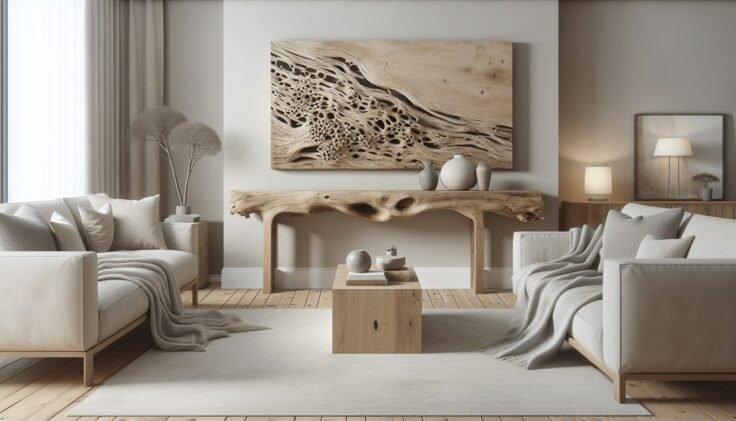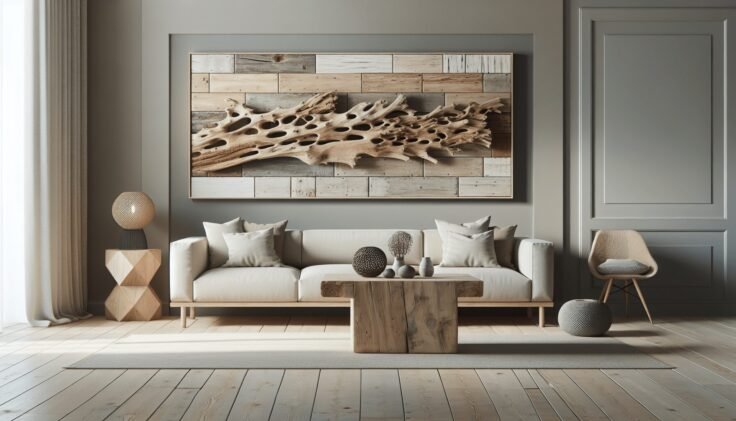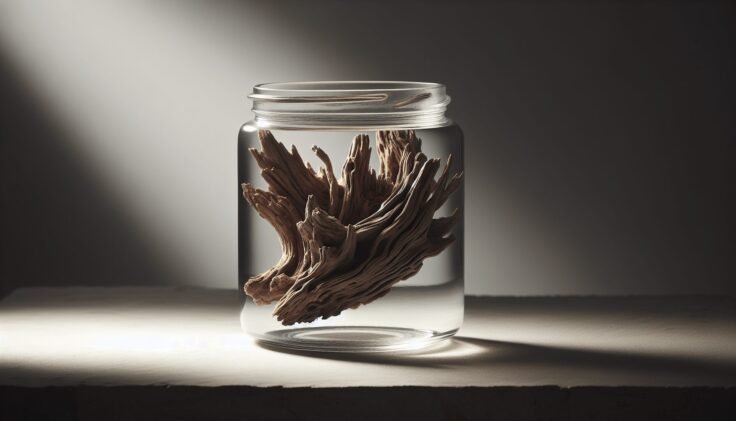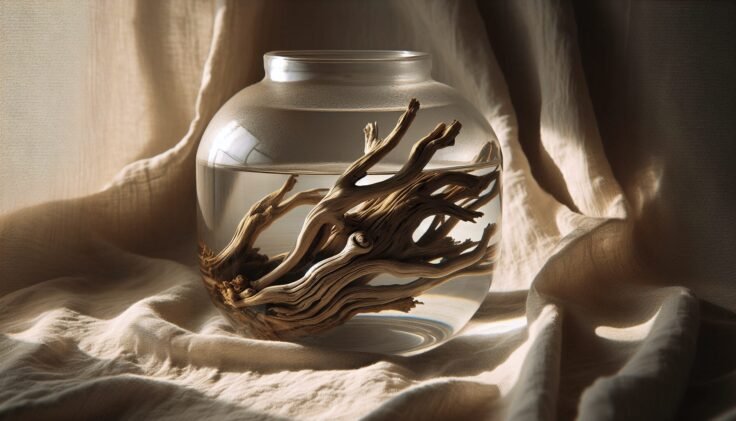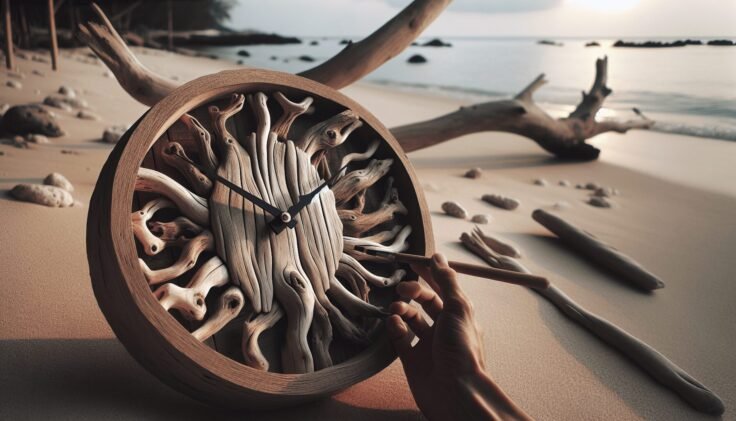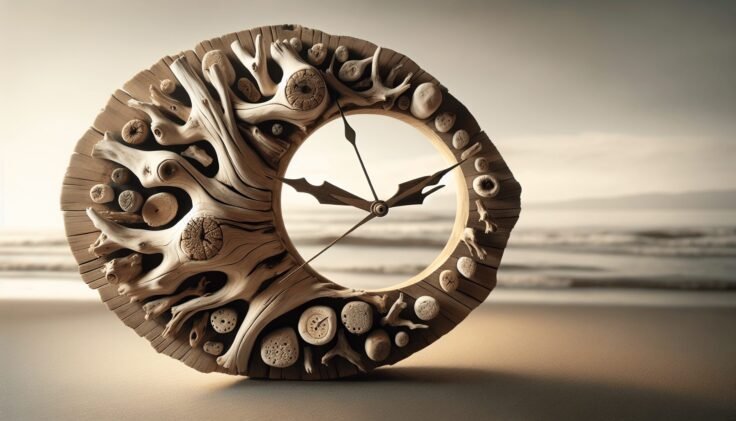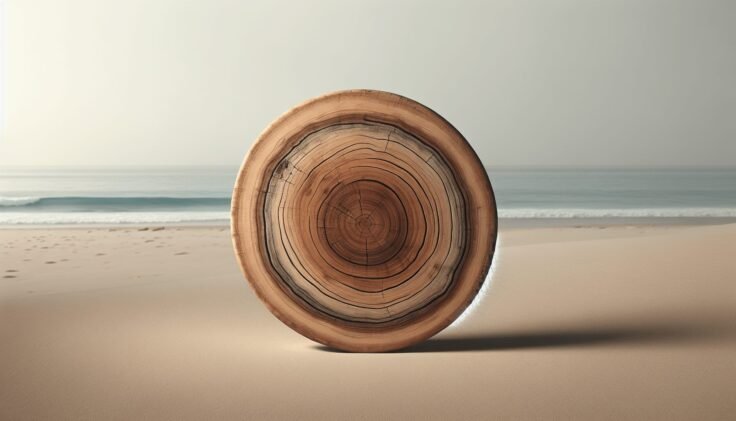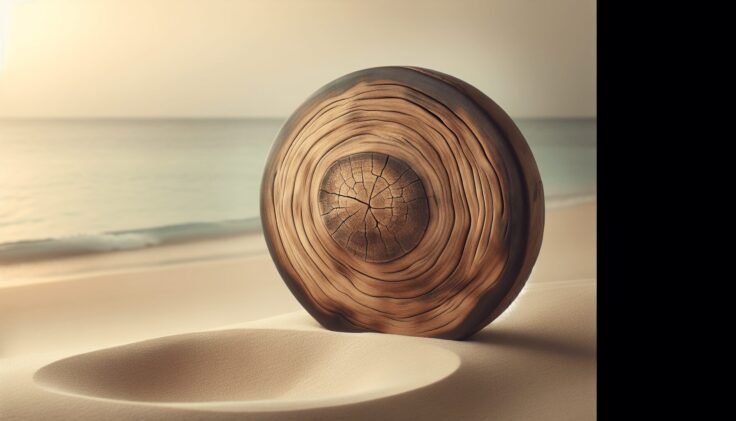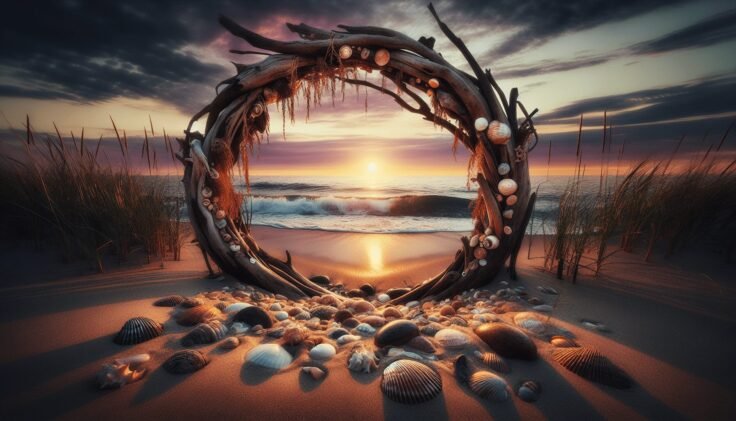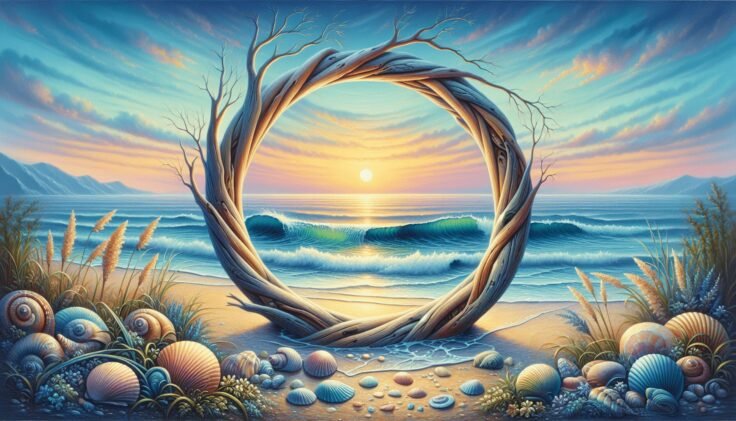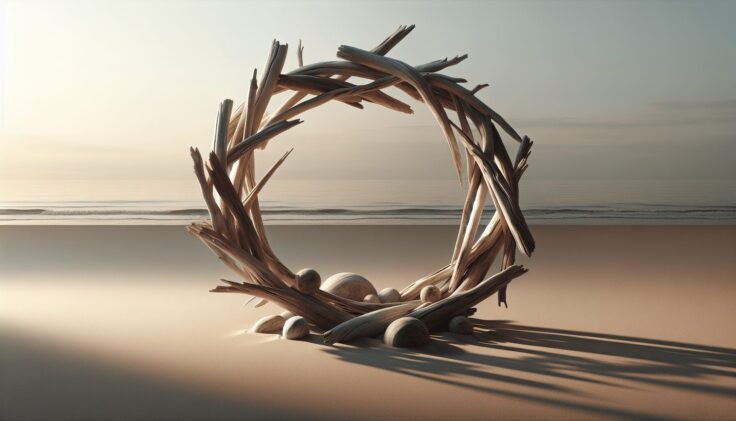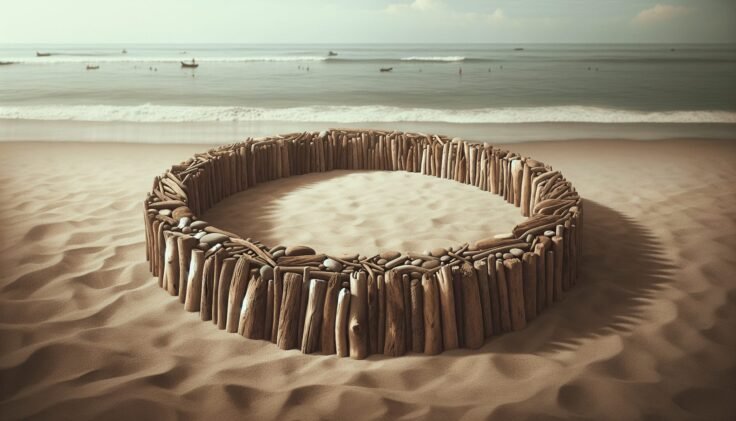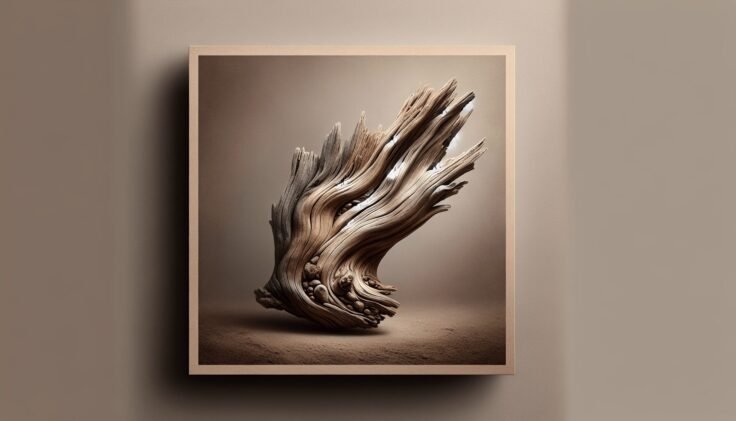Have you ever imagined transforming something as simple as a mason jar into a stunning piece of decor using driftwood? Adding driftwood to a mason jar combines natural beauty with everyday utility, creating a piece that can elevate any room’s aesthetic. This article will guide you through the process of understanding and creating a driftwood mason jar, ensuring a cozy, rustic charm for your home. Let’s embark on this creative journey together, where you’ll learn not only how to create a driftwood mason jar but also explore its uses and benefits.

What is Driftwood?
Driftwood, as the name suggests, is wood that has been washed ashore. Over time, as it is exposed to the elements like wind, sun, and water, it takes on a unique shape and texture. As a result, driftwood is often celebrated for its organic beauty and the natural character it adds to decor.
The Journey of Driftwood
Driftwood can start as branches or logs from trees that fall into rivers or oceans. Over time, these pieces of wood can travel long distances, softened and smoothed by water currents. This natural aging gives driftwood its distinguished pale color and weathered look, making it a favored choice for home decor, crafts, and art.
Collecting Driftwood
If you’re planning to collect driftwood for your mason jar project, there are some things to keep in mind:
- Locations: Look for driftwood along beaches, riverbanks, or lakesides. Always ensure that collecting driftwood is permitted in the area, as some places have conservation rules.
- Size and Shape: Choose pieces that are suitable for your project. Small, thin pieces work best for wrapping around a mason jar.
- Condition: Ensure the pieces are dry and free from mold or rot.
Why Choose a Driftwood Mason Jar?
When it comes to home decor, driftwood mason jars offer a blend of practicality and aesthetics. Not only do they look fantastic, but they also serve multiple purposes, making them a versatile addition to your living spaces.
Aesthetic Appeal
Driftwood’s organic texture and colors enable you to bring an element of nature into your home. When combined with the simplicity and transparency of a mason jar, it creates an attractive centerpiece or accent that speaks of subtle elegance.
Functional Uses
Beyond their beauty, driftwood mason jars are also extremely functional:
- Vases: Perfect for holding flowers, adding a touch of nature both inside and out.
- Candle Holders: Driftwood adds a rustic charm when used to encase a candle within a mason jar, creating a warm, inviting glow.
- Storage: Ideal for storing small items like pens, brushes, or utensils, they help keep essentials within reach while looking stylish.
Environmental Benefits
Using driftwood as a decor element is environmentally friendly. It involves repurposing natural materials, reducing the demand for manufactured goods, and minimizing waste. It’s a great way to incorporate sustainable practices into your home decor.
Materials Needed for a Driftwood Mason Jar
To create your driftwood mason jar, you’ll need a few basic materials. These can be sourced from craft stores, online, or even found items.
Basic Materials
- Mason Jars: These jars come in various sizes. Depending on your needs, you might choose a regular-sized jar for a vase or a smaller one for a candle holder.
- Driftwood: Small pieces that can be easily glued around the jar. They should be dry and clean.
- Adhesive: A strong craft glue or a hot glue gun to attach the driftwood to the jar.
Decorative Additions
For added creativity, you might consider:
- Twine or Rope: To wrap around the neck of the jar for additional rustic charm.
- Paint or Wood Stain: If you want to give driftwood a distinct color or finish.
- Beads or Shells: Small embellishments that can be attached for an extra touch of decoration.
Step-by-Step Guide to Creating a Driftwood Mason Jar
Embarking on this project can be a fulfilling experience as you transform ordinary items into beautiful decor pieces.
Step 1: Clean Your Materials
Before diving into the creative process, clean all your materials. Wash the mason jar with soap and water to remove any residues. Driftwood should be brushed off and, if necessary, soaked in a mild bleach solution to kill any remaining hidden organisms or bacteria. Once cleaned, let it dry completely in the sun.
Step 2: Plan Your Design
Arrange your driftwood pieces around the jar before applying any glue. Experiment with different arrangements to see which configuration you like best. You can decide on a tightly packed look or a looser design where some glass can peek through.
Step 3: Attach the Driftwood
Using your chosen adhesive, begin gluing the driftwood pieces one by one around your jar. Apply a small amount of glue to each piece and press it firmly onto the jar, holding it in place for a few seconds until it sets. Continue this process until the desired part of the jar is covered.
Step 4: Add Decorative Touches
Once the driftwood is secure, wrap twine or rope around the jar’s neck. Do you want to commemorate a special day or event? You can add other embellishments like beads, shells, or paint to personalize your jar further.
Step 5: Seal the Jar
For a more polished look, you might want to apply a thin coat of sealant over the driftwood. This will protect the wood from moisture and enhance its natural color.
How to Use Your Driftwood Mason Jar
Now that you have your finished driftwood mason jar, it’s time to explore how you can incorporate it into your space.
Centerpiece Display
Place your driftwood mason jar on a dining table or mantle. Fill it with seasonal flowers or fairy lights to create a centerpiece that draws attention and complements the surroundings.
Candle Holder
Use your jar to hold small pillar candles or tea lights. The driftwood will add a cozy ambience to any room as the candlelight flickers through the gaps between the wood.
Organizing Tool
For a functional and appealing organization tool, use the jar in your office or kitchen to corral utensils, brushes, or pens. This keeps your work area tidy while maintaining a stylish look.
Caring for Your Driftwood Mason Jar
To keep your driftwood mason jar looking as beautiful as the day you made it, follow a few maintenance tips.
Routine Cleaning
Dust your jar regularly using a soft cloth or a gentle brush. If needed, use a slightly damp cloth to wipe the glass portion of the jar and any smooth driftwood surfaces.
Handling Moisture
Driftwood can be sensitive to prolonged moisture exposure. If using your jar as a vase, ensure there are no water spills onto the driftwood, which can cause warping or mold over time.
Storage Considerations
If storing the jar for an extended period, consider wrapping it in bubble wrap or tissue paper to prevent dust accumulation and ensure it remains chip-free.
Troubleshooting Common Issues
Sometimes, despite our best efforts, things don’t go as planned. Here are solutions to a few common driftwood mason jar issues:
Problem: Driftwood Doesn’t Stick
- Solution: If driftwood doesn’t adhere well, ensure both the jar and wood are completely dry before attempting to glue. Apply sufficient pressure when gluing to allow the adhesive to set effectively.
Problem: Driftwood Warps or Cracks
- Solution: Avoid exposing the jar to excess heat or moisture. If cracks appear, consider reinforcing it with additional adhesive or replacing the affected piece entirely.
Problem: Uneven Arrangement
- Solution: If pieces are unevenly spaced, use smaller driftwood fragments to fill gaps, or reposition larger pieces to even out spacing and create a consistent appearance.
DIY Driftwood Mason Jar Inspiration
Looking for more ideas? Consider the following creative projects where you can use your newfound skills.
Festive Jars
For holidays or special events, customize your driftwood mason jars to match the theme. Adding seasonal decorations like autumn leaves or holiday ribbons can make your jars a festive focal point.
Driftwood Jar Lanterns
Create lanterns by attaching handles made from twine or wire. Inside, place a battery-operated tea light to safely illuminate your space, indoors or out.
Gift Jars
A handmade driftwood mason jar makes for a unique and heartfelt gift. Personalize it by adding the recipient’s name or meaningful objects that symbolize your connection.
Conclusion
Crafting a driftwood mason jar is a delightful blend of creativity and nature. This DIY project invites you to create a personalized, functional piece of art that reflects your style and enhances your living environment. As you use and care for your driftwood mason jar, remember that each piece of driftwood carries a history, adding a layer of story and character to your decor. Embrace the natural beauty of driftwood and enjoy the satisfaction of transforming the humble mason jar into something truly special.
